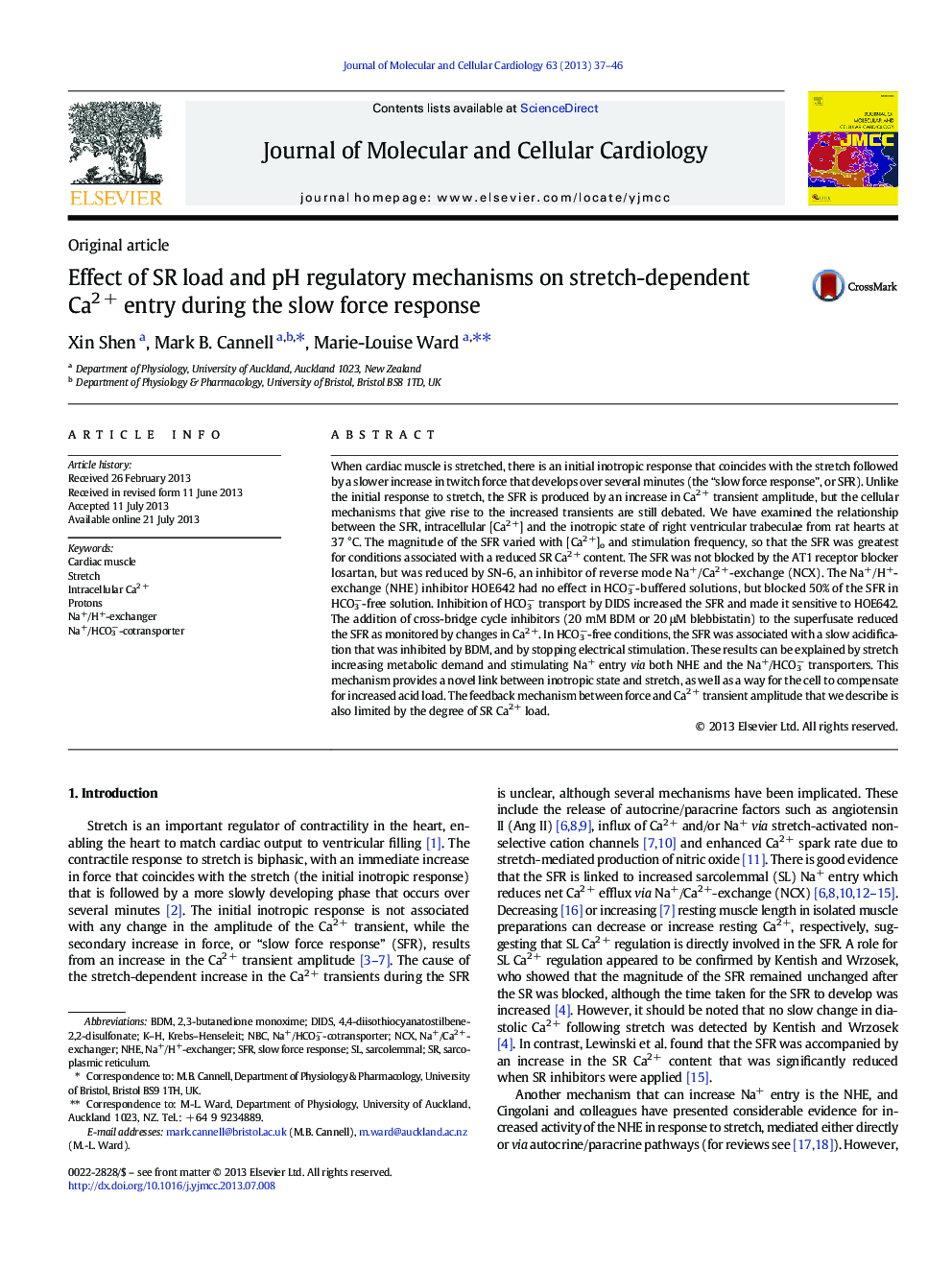| Article ID | Journal | Published Year | Pages | File Type |
|---|---|---|---|---|
| 8475041 | Journal of Molecular and Cellular Cardiology | 2013 | 10 Pages |
Abstract
When cardiac muscle is stretched, there is an initial inotropic response that coincides with the stretch followed by a slower increase in twitch force that develops over several minutes (the “slow force response”, or SFR). Unlike the initial response to stretch, the SFR is produced by an increase in Ca2 + transient amplitude, but the cellular mechanisms that give rise to the increased transients are still debated. We have examined the relationship between the SFR, intracellular [Ca2 +] and the inotropic state of right ventricular trabeculae from rat hearts at 37 °C. The magnitude of the SFR varied with [Ca2 +]o and stimulation frequency, so that the SFR was greatest for conditions associated with a reduced SR Ca2 + content. The SFR was not blocked by the AT1 receptor blocker losartan, but was reduced by SN-6, an inhibitor of reverse mode Na+/Ca2 +-exchange (NCX). The Na+/H+-exchange (NHE) inhibitor HOE642 had no effect in HCO3â-buffered solutions, but blocked 50% of the SFR in HCO3â-free solution. Inhibition of HCO3â transport by DIDS increased the SFR and made it sensitive to HOE642. The addition of cross-bridge cycle inhibitors (20 mM BDM or 20 μM blebbistatin) to the superfusate reduced the SFR as monitored by changes in Ca2 +. In HCO3â-free conditions, the SFR was associated with a slow acidification that was inhibited by BDM, and by stopping electrical stimulation. These results can be explained by stretch increasing metabolic demand and stimulating Na+ entry via both NHE and the Na+/HCO3â transporters. This mechanism provides a novel link between inotropic state and stretch, as well as a way for the cell to compensate for increased acid load. The feedback mechanism between force and Ca2 + transient amplitude that we describe is also limited by the degree of SR Ca2 + load.
Keywords
Related Topics
Life Sciences
Biochemistry, Genetics and Molecular Biology
Cell Biology
Authors
Xin Shen, Mark B. Cannell, Marie-Louise Ward,
